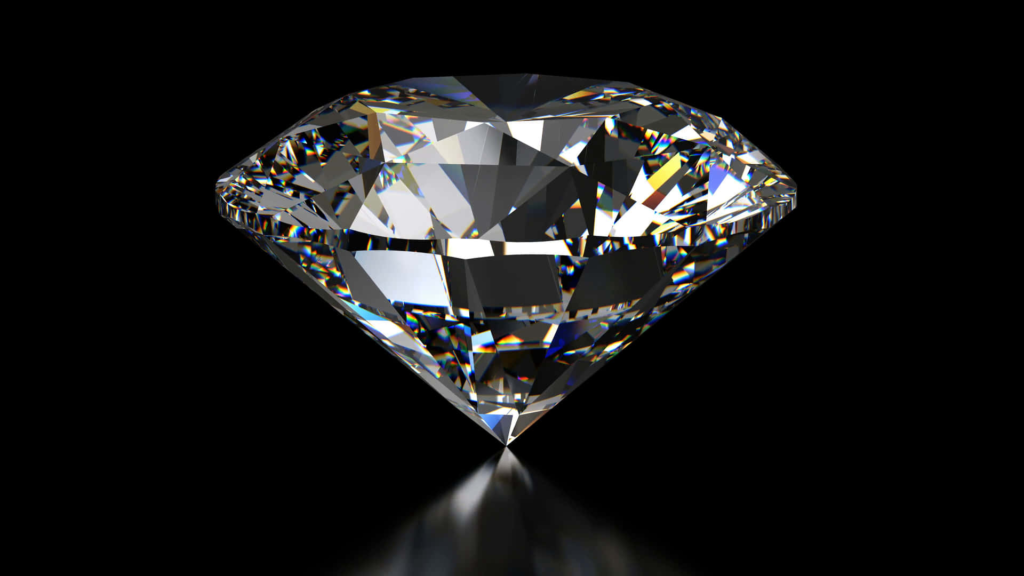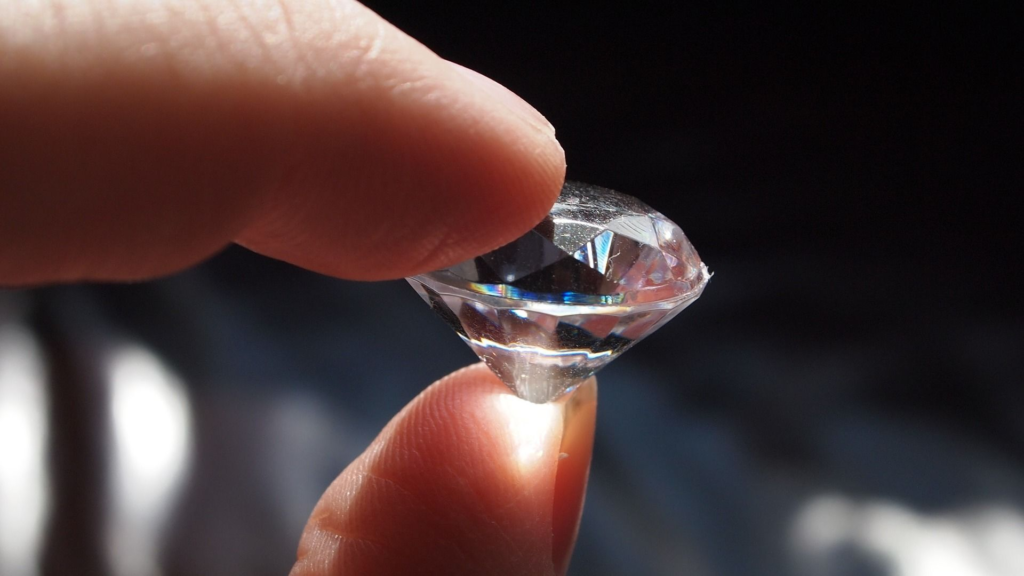Clarity and cut are more than just grading terms when selecting a diamond of actual distinction; they are fundamental to its value, presence, and brilliance. These elements determine how pure the stone appears and how perfectly it interacts with light. For those who demand excellence without compromise, understanding clarity and cut is essential to making a choice that reflects taste and sophistication. Let’s examine why these two qualities are at the heart of every exceptional diamond.
What is Diamond Clarity?
Diamond clarity refers to the degree of natural inclusions or internal features within the stone. Formed under immense pressure over millions of years, most diamonds carry subtle characteristics unique to their creation. These inclusions, often microscopic, can influence the visual purity of the diamond. The fewer the imperfections, the higher the clarity grade, and the more pristine the appearance.
For discerning buyers, a high clarity grade enhances not only the visual elegance but also the rarity and long-term value of the diamond. While some inclusions are invisible to the naked eye, their placement and visibility under magnification can subtly affect a diamond’s brilliance and appeal.

What is Diamond Cut?
The cut of a diamond is often considered its most important feature, as it determines how well the stone reflects and refracts light, giving it its signature brilliance. Unlike clarity or colour, which are natural attributes of the diamond, the cut results from precise human skill. It defines the stone’s proportions, symmetry, and angles, ensuring that it captures and plays with light in the most dazzling way. A well-cut diamond will appear lively, sparkling with every movement, while a poorly cut diamond, no matter its size or clarity, may lack the brilliance expected of such a rare gem.
Types Of Diamond Cuts
There are several types of diamond cuts, each with its characteristics and impact on the diamond’s beauty:
Round Brilliant Cut
The most popular and widely recognized cut, the round brilliant, features 58 facets designed to maximize the diamond’s brilliance. Its ideal proportions are calibrated to enhance light performance, ensuring it captures and breathtakingly disperses light.
Princess Cut
This square-shaped cut offers a modern, stylish appeal, with sharp corners and a high degree of brilliance. Due to its contemporary look and excellent light reflection, it is particularly favoured for engagement rings.
Emerald Cut
Distinguished by its step-like facets, the emerald cut offers a more understated elegance. The cut emphasizes clarity and transparency, and while it doesn’t have the sparkle of the round brilliant, its long, clean lines provide a sophisticated and timeless appearance.
Cushion Cut
Often described as a blend between the round and square cuts, the cushion cut features rounded corners and more significant facets that enhance the diamond’s fire and brilliance. It is particularly favoured for vintage-style pieces.
Asscher Cut
The Asscher cut features a high crown and a deep pavilion, similar to the emerald cut but with square corners. Its stepped facets and symmetry give it a unique, striking look, often exuding old-world charm.
Oval Cut
The oval cut combines the brilliance of the round cut with an elongated shape that can create the illusion of a larger size. This cut is ideal for those seeking a unique yet classic appearance.
Radiant Cut
With a square or rectangular shape, the radiant cut features trimmed corners and brilliant facets throughout the stone, combining the elegance of the emerald cut with the brilliance of the round cut.
Marquise-Cut
Known for its elongated, football-like shape, the marquise cut gives the illusion of a larger stone. Its pointy ends and sweeping curves create a bold, distinctive look.
Heart Cut
A romantic and unique choice, the heart cut combines the beauty of the round brilliant with the shape of a heart. Its striking symmetry makes it a popular choice for personalized jewelry pieces.
Importance of Diamond Clarity and Cut
Clarity and cut are paramount when selecting a diamond to ensure its visual appeal and long-term value. Inclusions are the natural internal features formed within a diamond over time, subtle signatures of its origin that quietly shape its clarity and overall brilliance. Let’s explore the most common inclusions and how they impact a diamond’s quality.
Feathers
Feathers are minor internal fractures that can resemble wispy lines or cracks. In most cases, they are harmless and do not affect the stone’s structure. However, they may slightly impact durability when located near the surface or running deep. Visually, feathers can reflect light in a way that interrupts clarity, making their position and size crucial in high-grade diamonds.
Clouds
Clouds are groups of minute pinpoints clustered together, creating a hazy effect in some regions of the diamond. While a single pinpoint is typically negligible, dense clouds can diffuse light and reduce transparency. In premium diamonds, clouds must be carefully evaluated, as they can subtly diminish the stone’s fire and brilliance if poorly placed.
Crystals and Mineral Inclusions
Occasionally, other minerals become trapped within a diamond during its formation. These crystals may appear as black, white, or even coloured spots. Some are easily hidden beneath facets or prongs, while others, significantly darker, can be more prominent. The presence and contrast of these inclusions can influence clarity grading and the visual harmony of the diamond.
Needles
Needles are long, slender crystals that appear like fine lines within the diamond. They are generally faint and less intrusive than other inclusions, but their visibility depends on orientation and lighting. A needle near the table (top facet) of the diamond can attract more attention than one hidden within the pavilion.
Pinpoints
Among the most minor inclusions, pinpoints are tiny white or black dots within the diamond. On their own, they are typically inconsequential and invisible without magnification. However, when several pinpoints cluster together, they may form a cloud-like pattern, which can influence clarity if positioned unfavourably.
Internal Graining
Graining occurs when the crystal structure grows irregularly, resulting in lines or streaks that may appear under magnification. While usually subtle, internal graining can affect how light travels through the diamond and sometimes give it a milky or uneven appearance, detracting from the ideal visual symmetry.
Achieve Timeless Elegance with Perfect Diamond Clarity and Cut at Solitaire Jewellery
At Solitaire Jewellery, a diamond’s clarity and cut are essential to its brilliance and timeless beauty. Learn the importance of diamond clarity and cut from the experts at Solitaire Jewellery, as our specialists carefully select diamonds that showcase the perfect balance of clarity, ensuring purity and sparkle. The precision of the cut maximizes light reflection, enhancing the stone’s radiance. Whether you choose a diamond for an engagement ring or a special occasion, our collection offers only the finest diamonds, each cut to perfection. Trust Solitaire Jewellery to help you find a diamond that meets and exceeds your expectations for quality, elegance, and lasting value.

FAQs
What is the most essential quality of a diamond?
The cut of a diamond is considered its most essential quality, as it directly influences the stone’s brilliance and light performance. A well-cut diamond maximizes its fire and sparkle, ensuring it captivates with every movement.
What is the purest diamond in the world?
The purest diamonds in the world are Type 2a diamonds, virtually free from nitrogen impurities. Known for their exceptional transparency and remarkable brilliance, these diamonds are rare and highly coveted by collectors.
Is VS1 or VS2 better?
VS1 diamonds have fewer or smaller inclusions than VS2 diamonds, making them slightly more straightforward. Both are excellent choices for those seeking high-quality stones, but VS1 is considered a step above for its near-perfect clarity.
What is the rarest diamond colour?
The rarest diamond colour is red, followed closely by blue and green. Red diamonds, in particular, are so scarce that only a few are known to exist, making them incredibly valuable to collectors and connoisseurs.
What determines the importance of colour versus clarity in engagement rings?
In engagement rings, colour is typically prioritized over clarity. A diamond with minimal colour, particularly in the near-colourless range, will appear more vibrant and timeless. At the same time, clarity becomes a secondary factor for diamonds that are well-cut and set in a way that minimizes visible imperfections.
How does choosing clarity and colour affect a diamond’s bridal jewellery?
Clarity and colour significantly influence the overall appearance of bridal jewelry. While a diamond with excellent colour appears brighter and more radiant, a diamond with high clarity ensures a flawless, visually pure stone, creating an enduring symbol of elegance and commitment.
